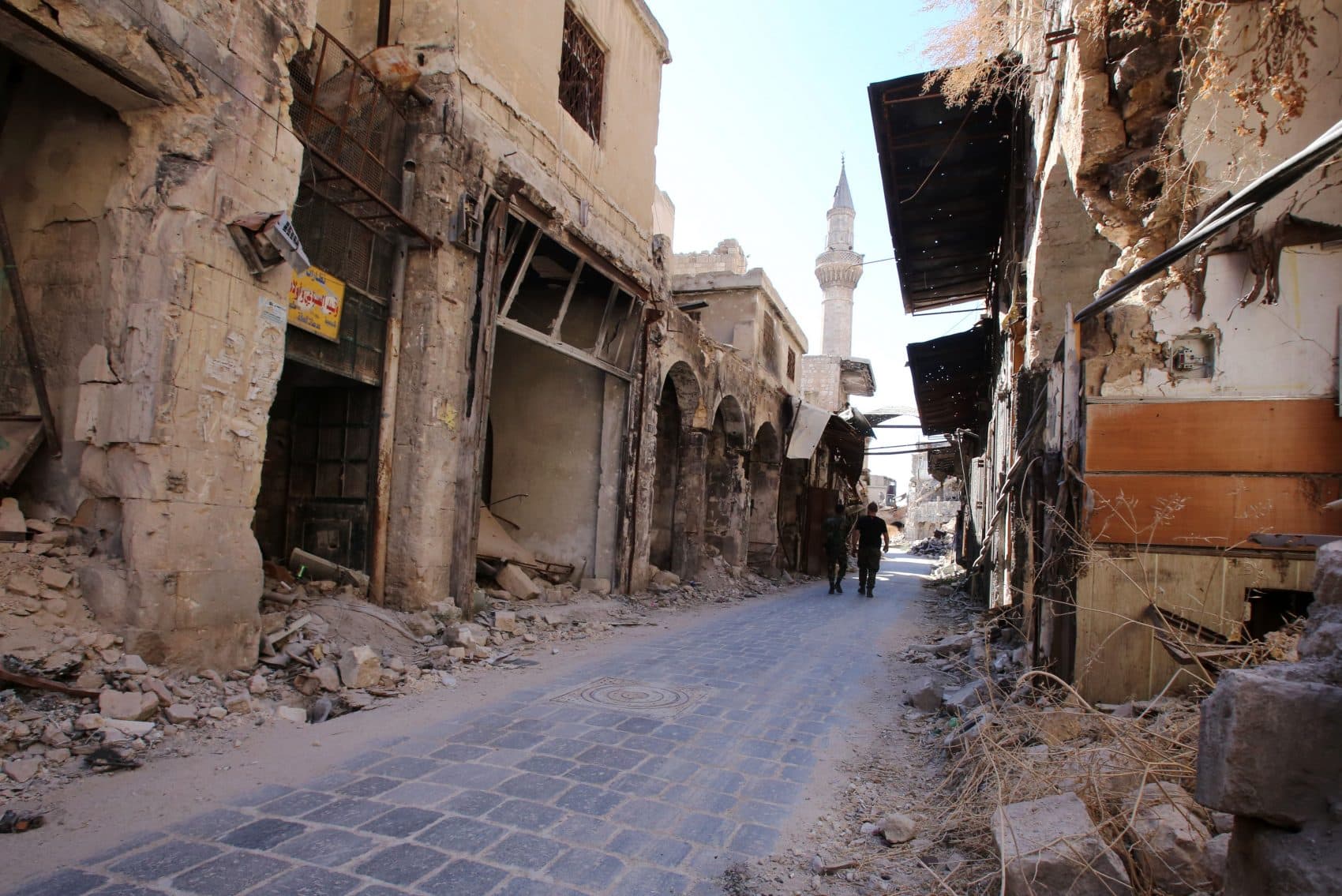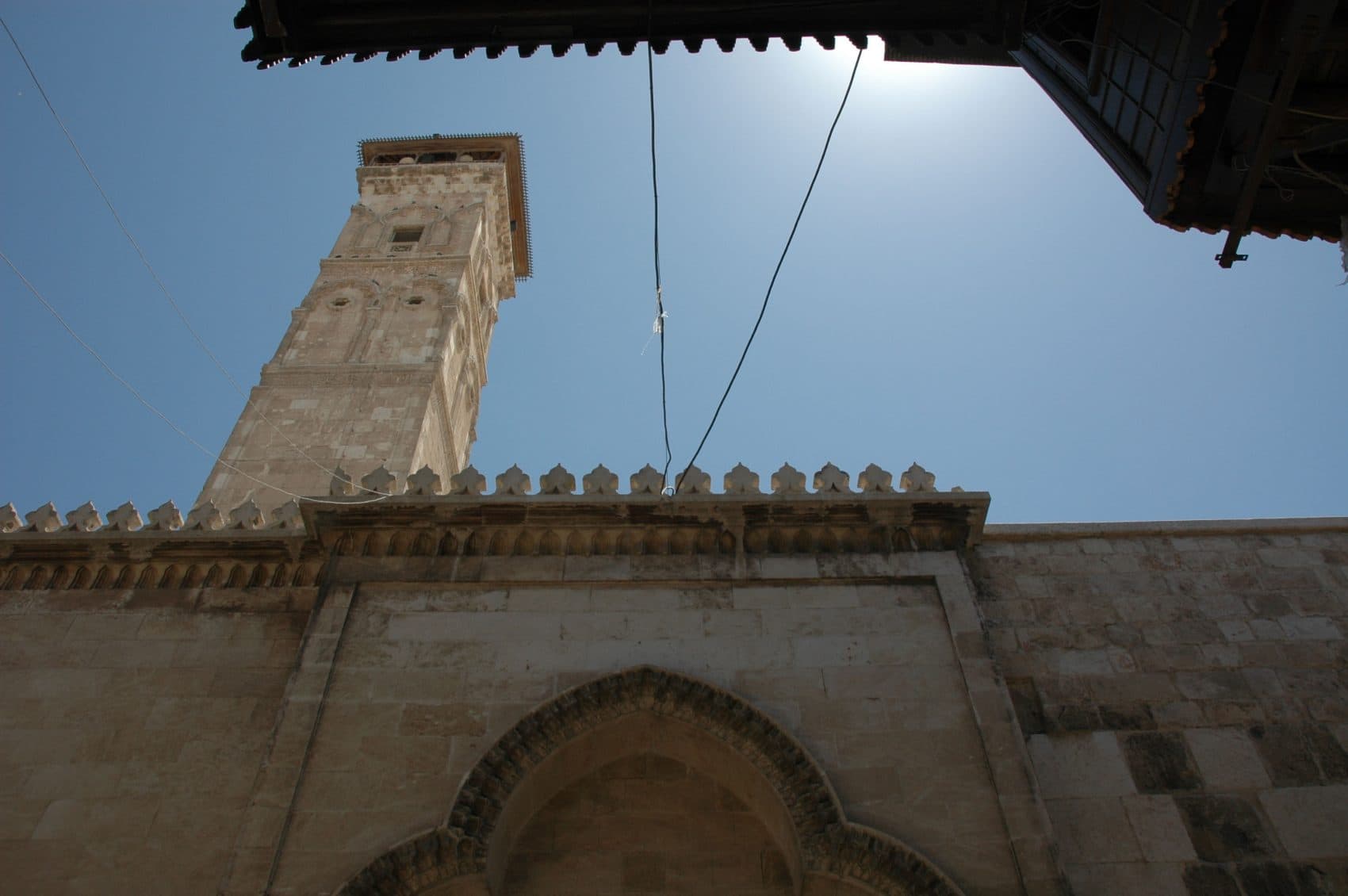Advertisement
Before It Was A Battleground, Aleppo Was The 'Jewel Of Syria'

The United Nations Security Council called an emergency meeting over the weekend after more bombing by Syrian and Russian forces of Aleppo, a city split by the rebel army and forces loyal to Syrian president Bashar al-Assad.
Even if they know the name, few Americans know much about Aleppo — one of world's oldest continually inhabited cities — beyond the grisly headlines coming out of the military conflict there.
In addition to claiming more than 31,000 lives in Aleppo, the war has ravaged this city once known as "the jewel of Syria."
For a look at Aleppo before the civil war began in 2012, Here & Now's Robin Young talks with Charles Wilkins of Wake Forest University.
Interview Highlights: Charles Wilkins
On how the area comprising Aleppo first became a cultural center
"It's geographical position, perhaps, was strongest in determining its fate. It was placed in an area that connected Anatolia with lands to the south — that is, what is today the Fertile Crescent, the Arabian Peninsula, Egypt — and to the east, Iran and India. And running east-west, of course, it connected Europe with the rest of Asia, so it was very well placed to be what was called a 'caravan city' with those caravans carrying goods to peoples and ideas between those various points."

On the formation of modern Syria and the effects on Aleppo
"Following the first World War, there was an effort by indigenous peoples, namely the Arab people, to establish an independent Arab kingdom. However, the French asserted their control over Syria and basically drew lines that separated Syria from the modern republic of Turkey, and also created Iraq and Syria, so you have various new modern political boundaries that separated the city of Aleppo from its natural hinterland, that included southern Turkey today, as well as what is the city of Iskenderun or Alexandretta in Turkey. And then further to the east, it separated it from Mosul in Iraq, also an important sort of trading partner with Aleppo. So, it was in fact a cataclysm for Aleppo when those modern boundaries were drawn because its economic ties were severed.
"I can hardly put into words my emotions in seeing this city brought to its knees in this way."
Charles Wilkins
On the state of Aleppo prior to the current conflict in Syria
"It was a very large city. It was a metropolis with over 2 million people, the largest city in Syria itself. But approaching the city from where I normally approached it, from Damascus going by bus, it would be a very ride through many, many suburbs, usually of apartment blocs, before you reached the city center where you would find, rising in the horizon, the ancient citadel ... And then, to the west side of that is the famous covered market. It's said that the square area of that market is one of the largest in the Middle East, perhaps the largest one being in Istanbul and Aleppo being second."
"You would enter the ancient city through the walls, usually from the west. And as you enter it, you immediately smell spices. Walking further in, you encounter shops selling soap, olive oil. Aleppo is famed for its soap. And further on you might even find heavy wool cloaks to wear in the cold Aleppan winters."

On the current state of the city
"I can hardly put into words my emotions in seeing this city brought to its knees in this way. I mean, the bombing of the city, the besiegement of the city, has forced many residents of Aleppo to flee and relocate, so it's a depopulated city. You have a ghost town in many areas. A ghost town that is also in rubble, a very depressing picture indeed. Many of the friends, the people that I knew in Aleppo, have long since gone. People need to be constantly reminded of what is going on. I know we're so focused on national politics right now, but — and, in fact, I fear that Syria's taking advantage of our focus on national politics to sort of reign terror upon Aleppo and other parts."
"The government-controlled part of Aleppo today, the western part, has been able to preserve some measure of normality. One can still shop, one can still even go to school, but that normality can be very fragile and gone in a second. It's amazing, if we look back from a historical perspective, it has suffered multiple defeats, multiple sieges. It was attacked and razed by the Mongols, many parts of it were. And as yet, was reborn and returned to its former grandeur."
"I think there are a significant number of Aleppans who are basically waiting it out. They're hoping for some kind of resolution. So, I think, they place great hopes in that city and a return to peace, and I know they want a return because I think that they are aware of its enduring economic potential due to its location, its geography, its climate, its history."
Guest
Charles Wilkins, associate professor of Middle East history at Wake Forest University.
This article was originally published on September 27, 2016.
This segment aired on September 27, 2016.